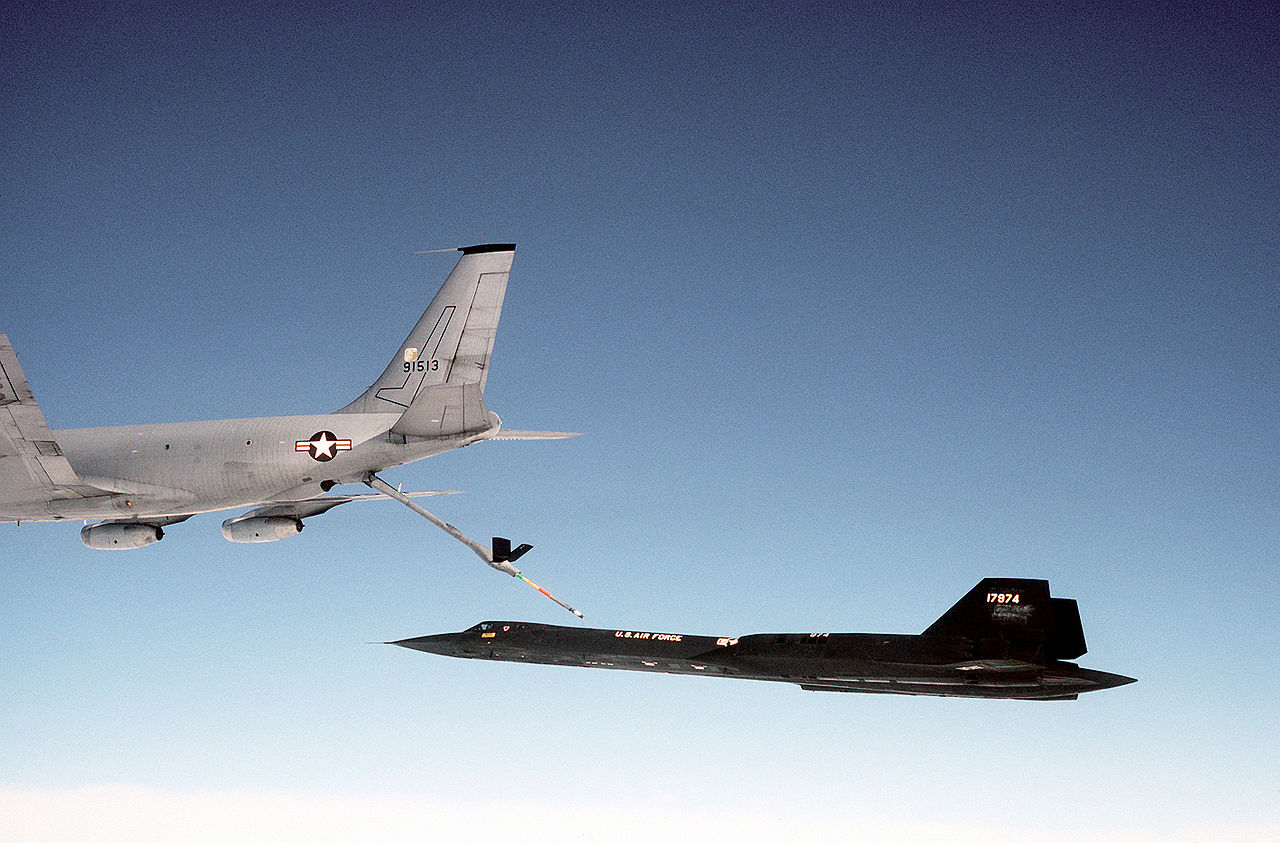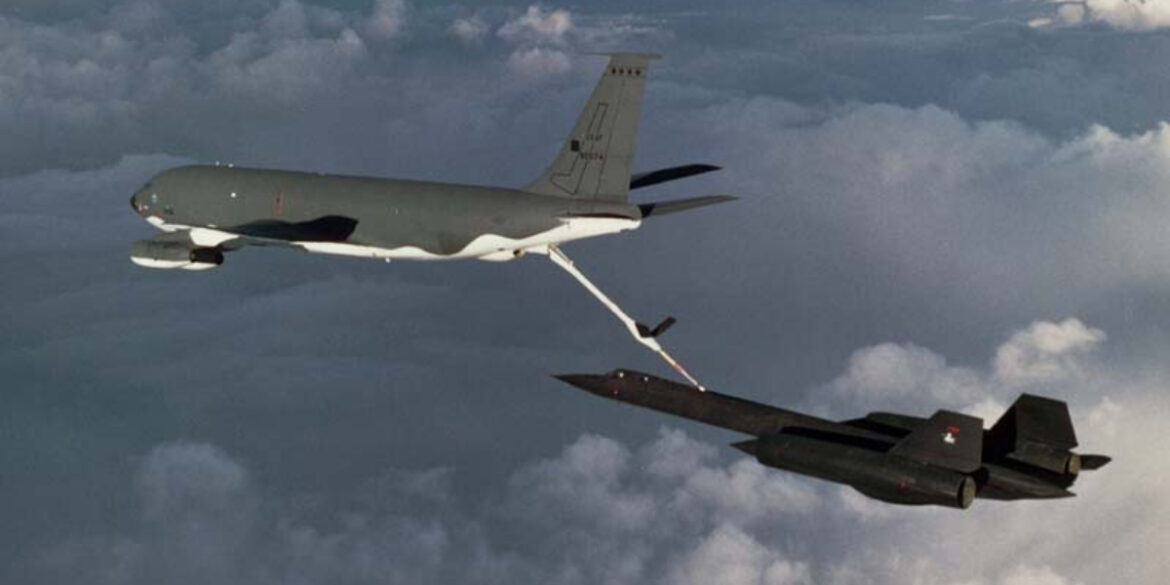“In military power, we would start to fall off the boom. The solution was to light one afterburner with careful finesse,’ Brian Shul, former SR-71 Blackbird pilot
The Lockheed A-12 and YF-12A aircraft served as the foundation for the development of the SR-71, also referred to as the “Blackbird” a long-range, advanced strategic reconnaissance aircraft. The 4200th (later 9th) Strategic Reconnaissance Wing at Beale Air Force Base, California, received the first SR-71 to begin service in January 1966. The first SR-71 flight occurred on December 22, 1964. On January 26, 1990, the US Air Force deactivated its entire SR-71 fleet.
For over twenty years, the SR-71 held the record for being the fastest and highest-flying operational aircraft in the world. It could cover 100,000 square miles of the Earth’s surface per hour from 80,000 feet.
If it weren’t for aerial refueling, the Blackbird’s range would be limited to about 2,000 nautical miles. The aircraft’s range was increased by several air refuelings to the crew’s maximum endurance. A few missions have gone above 12,000 NM. The SR-71 and tankers’ forward basing allowed for increased overall efficiency, shorter missions with shorter ranges, and fewer air refuelings.

However, once the fuel load became too heavy, the SR-71’s J58 turbo-ramjets could not generate enough thrust to stay with the tanker even at 100% thrust. To allow it to stay connected and receive all 80,000 lbs of fuel, the pilot had to light one afterburner, the asymmetric thrust of which made the plane fly slightly sideways.
As told by Brian Shul in his book Sled Driver, that was standard operating procedure. The J58 engine did not appreciate subsonic flight.
“I was accustomed to being on the boom for just a few minutes to top off in fighters. In contrast, SR-71 refueling took fifteen minutes or more, which could seem like an eternity. This time was needed because the airplane took on an incredible amount of fuel. During a normal refueling, we usually received over 11,000 gallons. This changed our gross weight by 70,000 pounds and caused a corresponding change in the center of gravity of our aircraft. At the slow 300-knot range in which we were flying to refuel, the feel of the jet became sluggish as the SR filled with fuel. At these gross weights and slower airspeeds, the SR-71 became thrust-limited during the last few minutes of refueling.
“In military power, we would start to fall off the boom. A disconnect was highly undesirable since the jet was less responsive now and to reconnect was more difficult. It also meant wasting time on the refueling track, and this could affect our overall mission timing. The solution was to light one afterburner with careful finesse. The fine art of pulling the throttle ever so slightly up and just into the minimum burner range was handed down from one generation of SR pilots to the next. The SR is the only airplane I know that required the use of afterburner to stay on the boom.
“Using one afterburner caused another problem: asymmetrical thrust. Some pilots used a little rudder to handle the yaw. Others left the rudders alone, flew sideways, and looked out the front quarter panel to see forward. The quarter panels were located on either side of the windshield. Only the left quarter panel was wired for defogging, so we always lit the left burner to yaw right so we could use this feature if needed.
“The most exciting moments on the refueling track were normally reserved for those final few minutes in afterburner on the boom with a very heavy jet. Once I selected min AB and the TEB dumped in, there was a pause, then the airplane lunged sideways and started to charge up the boom. With the left burner stabilized in min AB, I controlled our fore and aft position with right throttle.
“With this method, the pilot controlled the airplane by leading the power inputs. It was like flying a freight train because the airplane’s inertia caused a lag between throttle input and aircraft response. It wasn’t uncommon at this point for the director lights to resemble a pinball game, flashing from end to end as the fore and aft movements of the jet caused continual changes in relative position. I had to ignore the director lights, grit my teeth, and call on every bit of my experience to get to the end of the refueling track with a full tank.”
Photo by U.S. Air Force and Tony Landis Lockheed

